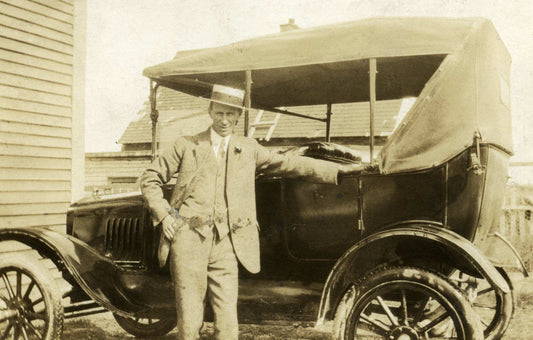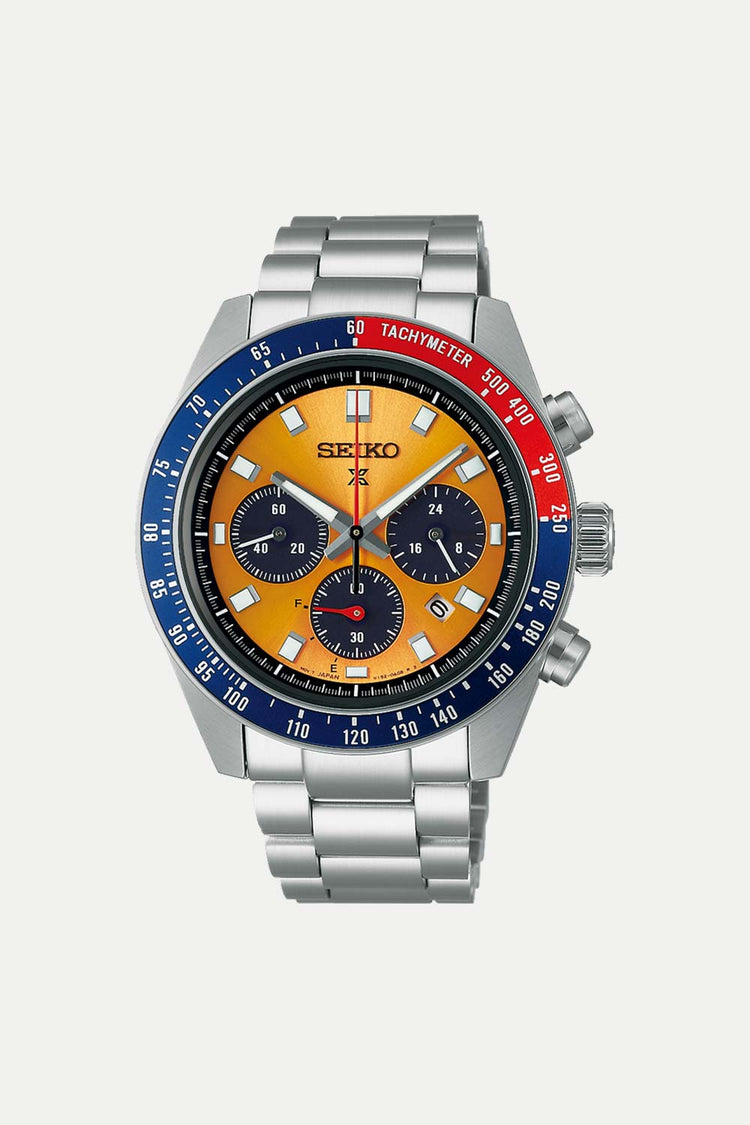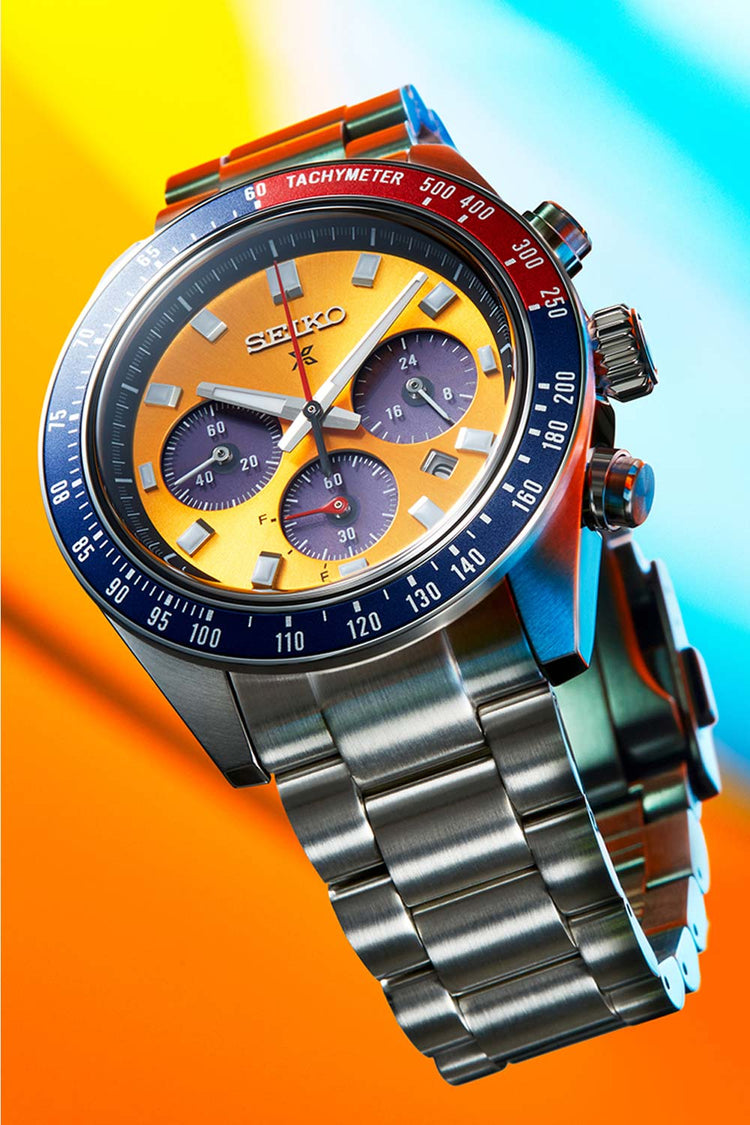SSC947P1
Description
Plus
Moins
In 1969, Seiko introduced the world's first automatic chronograph featuring both a vertical clutch and a column wheel, known as the Seiko Speedtimer. One piece from the initial 6139 Speedtimer series gained fame as the first automatic chronograph to venture into space: in the 1970s, NASA astronaut Colonel William Pogue took this original chronograph on a mission to Skylab, the first US space station. The watch earned the nickname 'Pogue' after its notable wearer.
Beneath a curved sapphire crystal lies a vibrant yellow dial, reminiscent of the 6139 original. Faithfully recreating the ‘Pogue,’ the second hand and the subdial minute hand at 6 o’clock are a striking red. With 12 Lumibrite spots on each of the wide vintage-style indices, this Speedtimer is designed for excellent legibility in dark conditions. True to the original design, it features a blue and red aluminum bezel with a tachymeter and a chronometer second scale on the inner dial ring. The bracelet tapers from the lugs to the buckle.
This modern version is equipped with a V192 solar chronograph calibre that charges in both natural and artificial light. Accurate to within +/- 15 seconds per month, it boasts a power reserve of 6 months when fully charged.
Technical Specifications
Plus
Moins
Caliber Number: V192
Movement Type: Solar
Precision: ±15 seconds per month
Power reserve: Operating for approx. 6 months (when fully charged)
Functions: Overcharge prevention function, 24-hour hand, Equipped with small seconds hand, Chronograph up to 60 minutes in 1/5 second increments, Power reserve indicator, Date display
Case Material: Stainless steel
Case Thickness: 13.0mm
Case Diameter: 41.4mm
Lug-to-lug: 45.9mm
Crystal: Curved sapphire crystal
Crystal Coating: Anti-reflective coating on inner surface
LumiBrite: Lumibrite on hands and index(es)
Clasp: Three-fold clasp with push button release
Distance between lugs: 21mm
Water Resistance: 10 bar
Magnetic Resistance: 4,800 A/m
Weight: 164.0g
Features: Tachymeter function, Screw case back
Description
In 1969, Seiko introduced the world's first automatic chronograph featuring both a vertical clutch and a column wheel, known as the Seiko Speedtimer. One piece from the initial 6139 Speedtimer series gained fame as the first automatic chronograph to venture into space: in the 1970s, NASA astronaut Colonel William Pogue took this original chronograph on a mission to Skylab, the first US space station. The watch earned the nickname 'Pogue' after its notable wearer.
Beneath a curved sapphire crystal lies a vibrant yellow dial, reminiscent of the 6139 original. Faithfully recreating the ‘Pogue,’ the second hand and the subdial minute hand at 6 o’clock are a striking red. With 12 Lumibrite spots on each of the wide vintage-style indices, this Speedtimer is designed for excellent legibility in dark conditions. True to the original design, it features a blue and red aluminum bezel with a tachymeter and a chronometer second scale on the inner dial ring. The bracelet tapers from the lugs to the buckle.
This modern version is equipped with a V192 solar chronograph calibre that charges in both natural and artificial light. Accurate to within +/- 15 seconds per month, it boasts a power reserve of 6 months when fully charged.
Technical Specifications
Caliber Number: V192
Movement Type: Solar
Precision: ±15 seconds per month
Power reserve: Operating for approx. 6 months (when fully charged)
Functions: Overcharge prevention function, 24-hour hand, Equipped with small seconds hand, Chronograph up to 60 minutes in 1/5 second increments, Power reserve indicator, Date display
Case Material: Stainless steel
Case Thickness: 13.0mm
Case Diameter: 41.4mm
Lug-to-lug: 45.9mm
Crystal: Curved sapphire crystal
Crystal Coating: Anti-reflective coating on inner surface
LumiBrite: Lumibrite on hands and index(es)
Clasp: Three-fold clasp with push button release
Distance between lugs: 21mm
Water Resistance: 10 bar
Magnetic Resistance: 4,800 A/m
Weight: 164.0g
Features: Tachymeter function, Screw case back
You May Also Like









